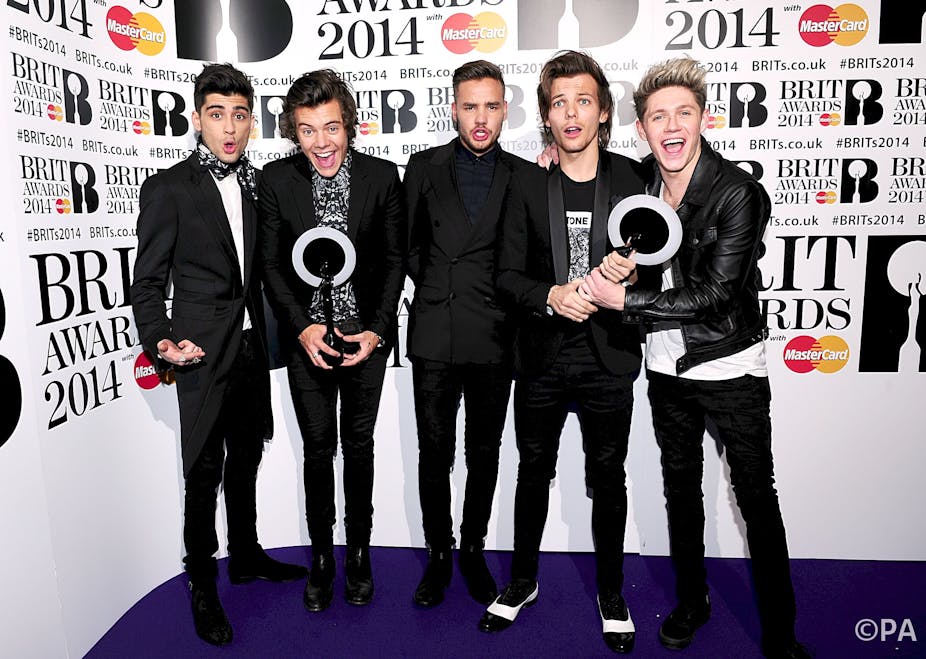One Direction got lucky this year, taking two awards away from the Brits. One of these was in the new Best British video category, judged by the British public via a live vote over Twitter.
And this was certainly one of the notable marketing points leading up to this week’s Brit Awards. But the new category can be regarded as a somewhat late arrival to the party if we consider the extensive history of popular music and visual media.
The popular adage that Queen’s Bohemian Rhapsody was the first “pop video” in 1975 doesn’t take into account the fact that something similar had existed throughout the 20th century. Indeed, it stretched back even before the invention of sound on sound technologies in the 1920s. The 1900 Paris world fair included actors performing audiovisual representations of popular songs, whilst “soundies”, a kind of visual jukebox, became popular in the US in the 1940s, long before the advent of MTV in 1981.
Perhaps fittingly, given this long history, Wednesday night’s supposed “innovation” came across as something of a stylistic conservation zone. Despite the rather laboured real-time voting by hashtag, the actual nominations used a series of well-worn tropes that have been part of the audiovisual language of pop music culture for decades.
Most of the nominations (Ellie Goulding, One Direction and John Newman) use the traditional mix of narrative and performance, and their use of visual clichés such as slow-motion and spotlight flares draw upon the stylistic mainstays of the 1980s heyday of pop videos. The large-scale choreography also taps into a tradition stretching from 1930s musicals though to pop exploitation films of the 1950s and beyond.
There was also an explicit mining of pop music’s past, from One Direction’s jokey rejection of boy band cliché in their video, Best Song Ever, to Goulding’s 1980s styling and choice of location, through to the deliberate referencing of Tony Palmer’s footage of Northern Soul dancers at the Wigan Casino (originally broadcast in 1977) in Newman’s Love Me Again video.
This doesn’t mean that music video is simply irrelevant in 2014. The increasing availability of everyday recording and video technologies across a range of devices has democratised the medium. There has been an exponential increase in the amount – and variety – of videos being made. Video sites are now abound with high-quality, highly inventive videos made by DIY producers, parodies and response videos, hybrid forms such as mashups, and intimate performances from an almost infinite number of performers. These often transcend traditional media channels to reach global audiences.
It is the spontaneity and authenticity of such self-made media that is being invoked in Ellie Goulding’s second entry in the video category, Calvin Harris’ I Need Your Love. Full of apparently self-recorded, hand-held shots of intimate situations featuring the two stars and a series of actors, the video desperately tries to capture the spirit of the amateur video. At the same time, its clearly staged scenarios and high-production qualities create a distancing effect for the viewer. We don’t quite have faith in what we are seeing.
But examples such as this and indeed, the Brits’ attempt to engage with social media through the video award, illustrate the central importance of new technologies to the music industry. They are changing the aesthetics of audiovisual media and, more fundamentally, they are changing the way we listen to music at all.
Music videos have become increasingly embedded in everyday listening and so, unless they are to become completely irrelevant, the awards have to reflect this much more closely. The Brits have a long way to go.

